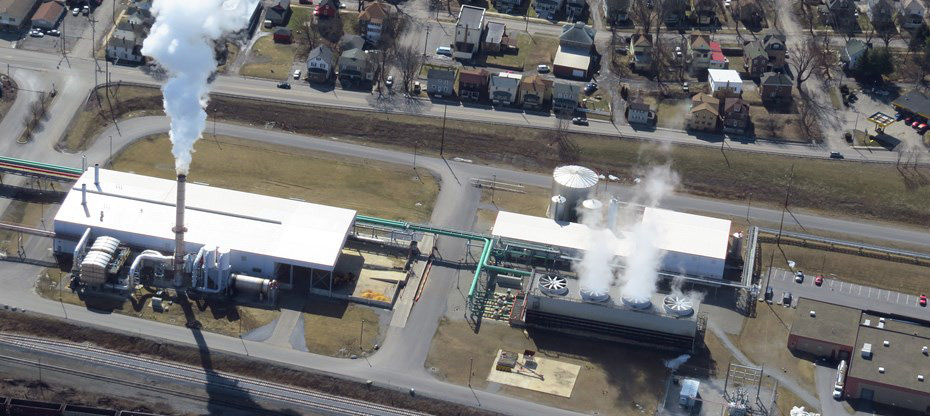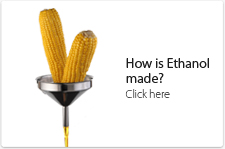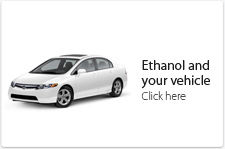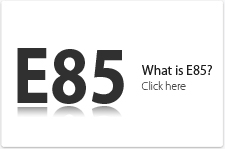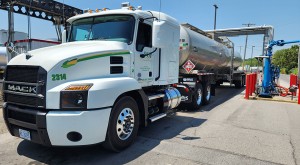As a producer of ethanol and wet and dry distillers grains, PGP strives to support agriculture by purchasing corn and providing feed to area livestock producers. Our goal is to develop renewable energy resources, helping to add value to the community and the agricultural industry in any way we can.
Located in Clearfield, Pa., PGP can process up to 40 million bushels of grain per year, producing 4 million gallons of corn oil, 110 million gallons of ethanol and 330,000 tons of dry distillers grain with solubles (DDGS).
What is Ethanol?
Also referred to as ethyl alcohol, grain alcohol or ETOH, ethanol is a clear liquid with an agreeable odor. Ethanol is made by fermenting and distilling simple sugars. Today, ethanol is a fuel produced from crops such as corn, grain sorghum, wheat, sugar and other agricultural feedstocks. Most fuel ethanol produced in the U.S. is derived from corn. Latest figures indicate that almost 40 percent of the U.S. corn crop is dedicated to ethanol production. In Brazil, the world’s top producer of ethanol, sugar is the primary feedstock.
Since it is produced from crops or plants that harness the power of the sun, ethanol is considered a renewable fuel. Pure fuel ethanol contains chemical properties identical to that of other grain alcohol. As such, it must be denatured or made unfit for human consumption. In the U.S., the most common denaturant is gasoline. There are three major types of fuel ethanol:
E10: The most common form of ethanol, E10 contains 10 percent ethanol and 90 percent gasoline. Nearly 13 billion gallons of ethanol are consumed each year in the U.S., the vast majority of which is E10. All automobile manufacturers in the U.S. approve the use of E10.
E15 is a blend of gasoline and up to 15 percent ethanol. Vehicles that are approved for E15 are listed below. Higher octane…Save money!
- Model Year (MY) 2001 and newer cars
- MY 2001 and newer light-duty trucks
- MY 2001 and newer medium-duty passenger vehicles (SUVs)
- All Flexible Fuel Vehicles (FFVs)
Note: it does not take a special vehicle to run on ethanol. All vehicles are “ethanol vehicles” and can use up to 10 percent ethanol with no modifications to the engine. Often people confuse E85 for ethanol, believing incorrectly that not all vehicles are ethanol-compatible.
E85: A mixture of 85 percent ethanol and 15 percent gasoline, E85 is a leading alternative fuel used in the U.S. More than 10 million autos run on E85 fuel and it can be purchased at hundreds refueling sites in the U.S. When E85 is not available, flexible fuel vehicles can operate on any blend of ethanol or straight unleaded gasoline.
E95: Pure ethanol, or the alcohol produced in an ethanol production facility. E95 must be denatured so humans cannot consume it. While it can be used by some vehicles in its pure form, most E95 is currently blended with gasoline for resale in petroleum markets.
Approximately 95 percent of all gasoline consumed in the United States is blended with ethanol. Because the ethanol molecule contains oxygen, it allows an auto engine to more completely combust fuel, resulting in fewer emissions. Fuel ethanol blends are successfully used in all types of vehicles and engines that require gasoline. Approval of ethanol blends is found in the owners’ manuals under references to refueling or gasoline.

